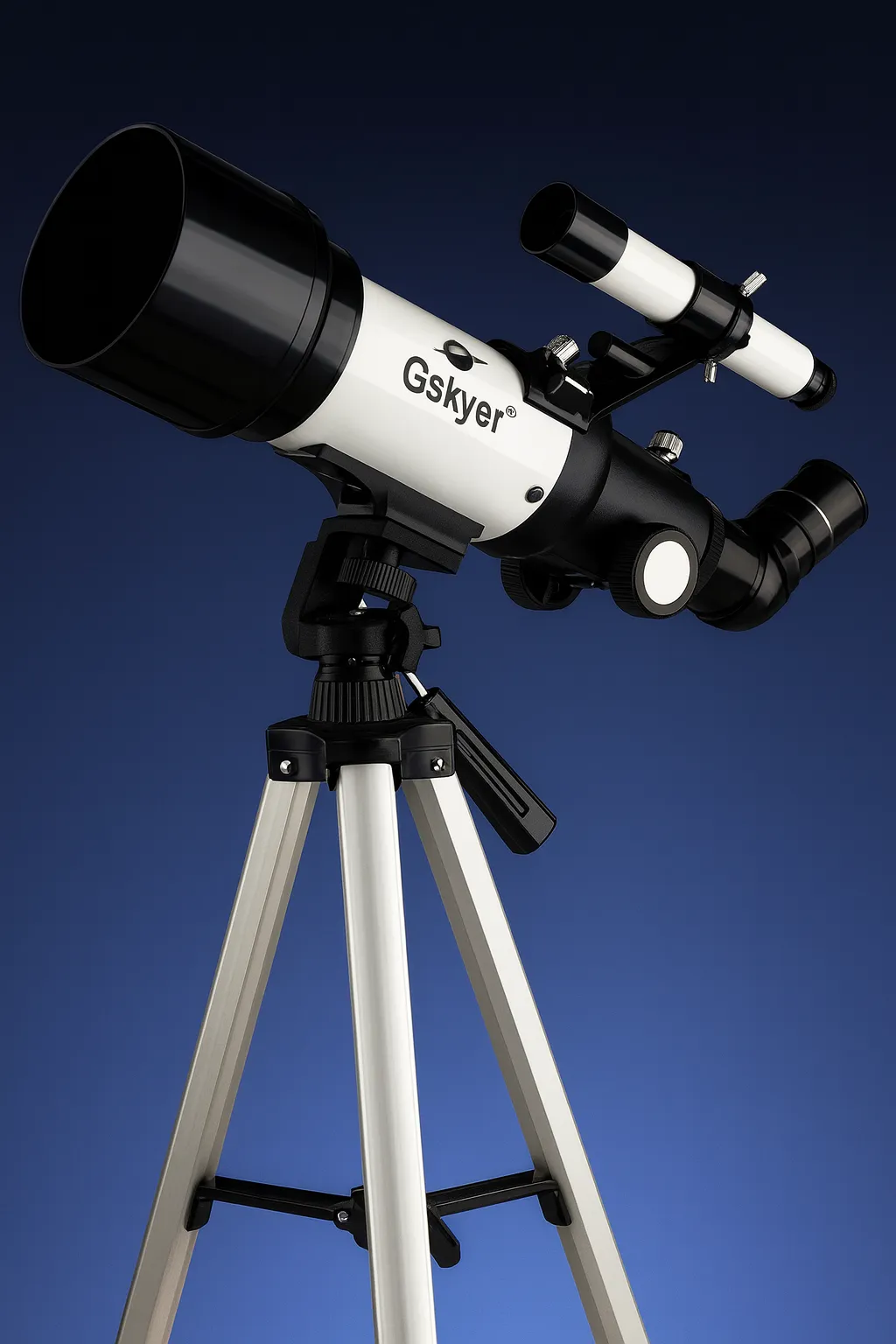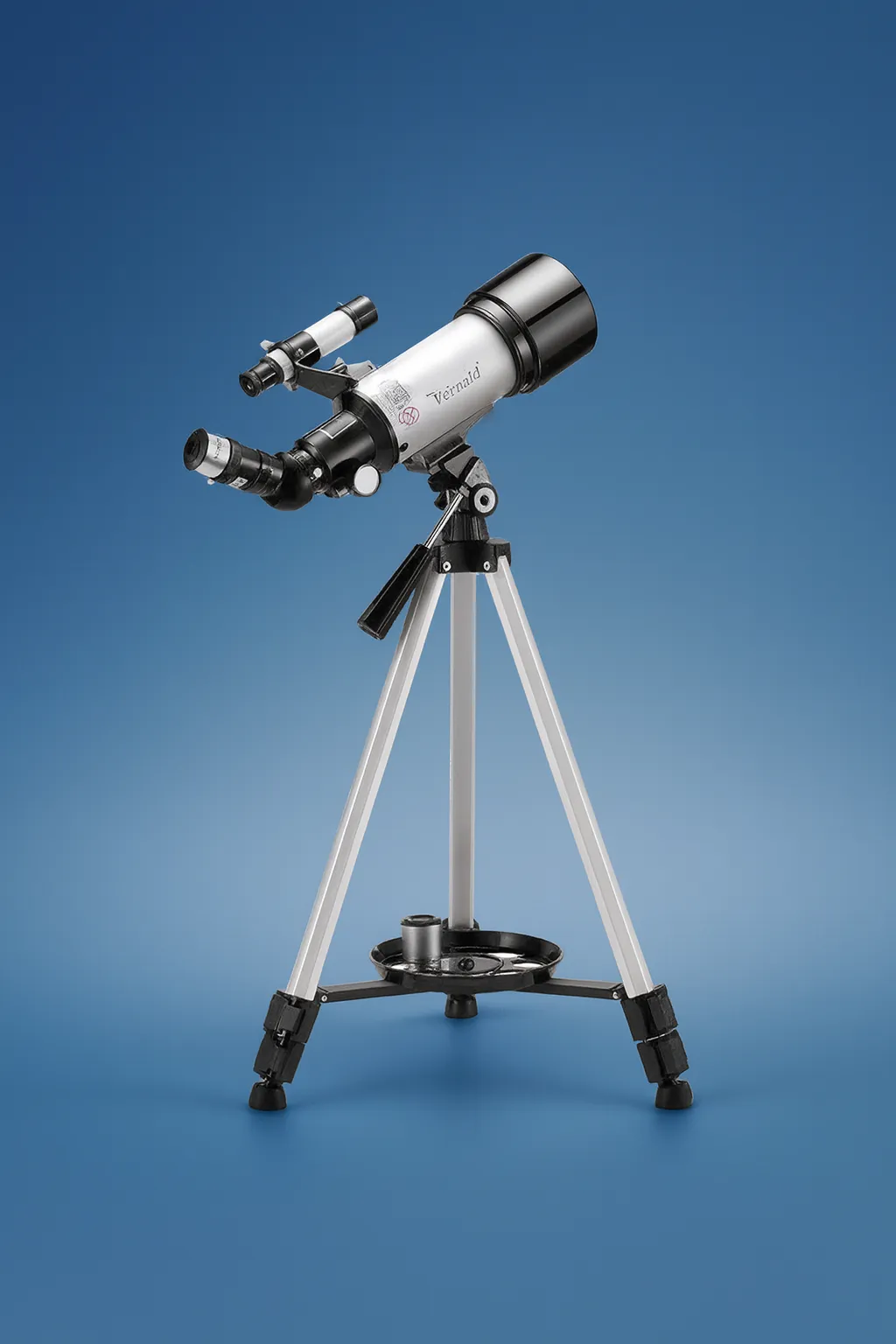Introduction
Despite being one of the most frequently purchased beginner telescopes on Amazon, the Gskyer Travel Scope 70 struggles to deliver acceptable optical performance for astronomy. Its popularity stems more from marketing and first-time buyer reviews than from the strength of the instrument itself.
User feedback and independent reviews indicate that the telescope prioritizes portability and accessory count over usable optics and stability. The included eyepieces, diagonal, finder scope, and 3× Barlow are low quality, and most owners report that the vibration-prone tripod makes focusing frustrating. Better starter telescopes—such as the Meade Infinity 70, Orion SkyScanner 100, and Zhumell Z100—offer substantially improved performance without requiring immediate upgrades.
Pros
- Extremely lightweight and portable
- Comes with a carrying backpack
- Low-magnification eyepiece is usable for daytime viewing
Cons
- Strong chromatic aberration and dim images at night
- Tripod and mount are unstable and vibrate excessively
- Finder scope, diagonal, and 3× Barlow are not practical to use
- Better-performing telescopes exist at the same price

Optics
The Gskyer Travel Scope 70 is a 70 mm f/5.7 achromatic refractor. While 70 mm of aperture can be capable in beginner telescopes, the short tube length combined with inexpensive optics results in strong chromatic aberration. Bright objects such as the Moon, Jupiter, or Venus show purple and green halos, and contrast is noticeably low. Independent user reports indicate that the optical performance is significantly below that of other 70 mm refractors such as the Meade Infinity 70, which uses a longer optical tube and higher-quality lenses.
At low magnification, the telescope can show daytime terrestrial views adequately, but at night the optical limitations become obvious. The scope’s short focal length encourages high magnification, but the optics and mount cannot support it.

Mechanics & Mount
The tripod and mount are made almost entirely of lightweight plastic to reduce weight and fit inside a backpack. While this satisfies the “travel scope” marketing angle, it results in severe vibration, especially when focusing or tracking an object at higher magnification. The mount does not hold alignment well, and even very light wind can cause the object in view to shake or drift.
Accessories
The Gskyer includes two Kellner eyepieces (25 mm and 10 mm), a 45° diagonal, a 3× Barlow, and a 5×24 finder scope. The 25 mm eyepiece provides a usable low-power view for daytime observing. The 10 mm eyepiece pushes the telescope to impractical magnification, and the 3× Barlow further degrades the image. The finder scope is small, dim, and difficult to align, and the 45° diagonal is meant for terrestrial viewing rather than astronomy.
Drawbacks
Nearly every major component of the telescope encourages replacement. The optics struggle under night sky use, the mount cannot damp vibration effectively, and the accessories are primarily included to increase the perceived value of the bundle. Once upgrades begin, the total cost exceeds that of better telescopes available at the same price.
Conclusion
While the Gskyer Travel Scope 70 appears appealing due to its portability and extensive accessory bundle, the actual astronomical performance is limited. For beginners interested in meaningful night sky observing, better telescopes exist at the same price—specifically the Meade Infinity 70, Zhumell Z100, or Orion SkyScanner 100. These models offer better optics, stable mounts, and a more enjoyable introduction to astronomy.
Disclaimer: This review is based on published specifications, user feedback, and community reports. We have not personally tested this telescope.

